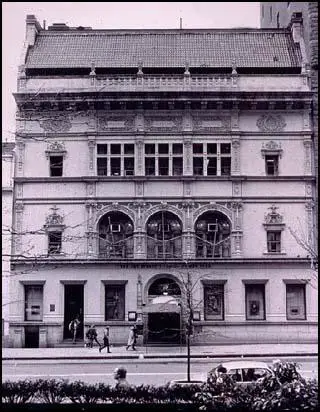Arts Students League
The Arts Students League was established in New York City in 1875. It had no entrance requirements and no set course. With teachers such as Thomas Eakins, Robert Henri, John Sloan, Art Young, George Luks, Boardman Robinson, Augustus Saint-Gaudens, Howard Pyle, George Grosz and George Bellows, it developed a reputation for progressive teaching methods and radical politics. In 1900 it had nearly a thousand students and was considered the most important art school in the country.
The involvement of Alfred Stieglitz, Paul Strand, Myra Wiggins, Francis Johnson, Edward Steichen, and Lee Miller with the Arts Students League also ensured that the organization played an important role in the early development of photography.

Teachers and students from Arts Students League were involved in the production of the Marxist journals, The Masses, The Liberator and the New Masses. As a result, people involved with the Arts Students League were investigated by the House of Un-American Activities Committee during the 1950s.
Former students include James Montgomery Flagg, Mary Heaton Vorse, Howard Pyle, May Wilson Preston, Howard Christy, Alice Beach Winter, Ida Proper, Lou Rogers, Norman Rockwell, Mary Pinchot Meyer, Roy Lichtenstein, Robert Rauschenberg, Lee Bontecou, Helen Frankenthaler, Eva Hesse, Donald Judd, Knox Martin, James Rosenquist and Cy Twombly.
The Arts Students League now has 2,200 students from around the world. Each student signs up for month-long, studio-based courses that meet seven days a week, morning, afternoon and evening. The curriculum is determined by the individual student and the methods of each teacher.
Primary Sources
(1) Robert Henri, open letter to Art Student League about Thomas Eakins, (29th October, 1917)
Thomas Eakins was a man of great character. He was a man of iron will and his will to paint and to carry out his life as he thought it should go. This he did. It cost him heavily but in his works we have the precious result of his independence, his generous heart and his big mind. Eakins was a deep student of life, and with a great love he studied humanity frankly. He was not afraid of what his study revealed to him.
In the matter of ways and means of expression, the science of technique, he studied most profoundly, as only a great master would have the will to study. His vision was not touched by fashion. He struggled to apprehend the constructive force in nature and to employ in his works the principles found. His quality was honesty. "Integrity" is the word which seems best to fit him. Personally I consider him the greatest portrait painter America has produced.
